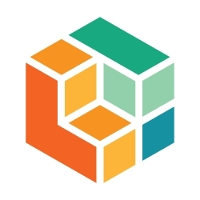4 basic rules for building efficiently and packing punch
When we start a new project, there’s excitement in the air. The world is our oyster! Ideas run wild! In that euphoric moment we want to do it all, and it’s easy to lose sight of the real need: delivering value to users and, in doing so, driving business goals. We need a method to the madness - a method that involves planning, prioritization, and iteration. The Lean Startup by Eric Ries gives us just that. It’s the holy grail for startup efficiency and impact, but its teachings hold immense value for projects of any kind.
Source: Startup Hyperbad
Here are four key lessons from the Lean Startup methodology and how to use them to guide project vision and process.
1. ELIMINATE UNCERTAINTY
Before you start building anything at all, make sure you know what your end goals are. Not what you want your project to be, but what you want it to achieve. Don’t think “we need our employee portal to look better.” Instead think “we need to increase employee productivity.” Knowing these goals up front will help you avoid a common pitfall in digital project builds: making decisions out of vanity instead of value. Your end goals will act as checkpoints for each decision made in the project journey.
2. WORK SMARTER NOT HARDER
So, you know your end goals. Now get to know your users so you can understand what functionality will have a high impact on them. Just because you can build something doesn’t mean you should. How much will this feature benefit the user? Does the particular benefit of this feature relate back to my core goals? If the answers are “a lot” and “yes,” then prioritize that thing! Otherwise, it’s probably not worth the time and money to build it.
This requires research up front and testing along the way. How can you know what’ll benefit the user without first knowing the user? Do focus groups, user interviews, user tests. It’ll help you make better decisions.
3. MAKE AN MVP (MINIMUM VIABLE PRODUCT)
Prioritize, prioritize, prioritize. Figure out what features will have both high impact and low tech lift. Start with those instead of trying to squeeze in every idea from the start. This way you can make small easy changes at the beginning if your MVP isn’t resonating.
Source: Stephen Gay
Even for projects that need to be rolled out in one fell swoop, the build process should be iterative - starting with an MVP that gets tested before you add on more complex features. You not only end up with a great foundation of core functionality, but you save the expense of having developers and designers go back at the end to change complex, interrelated functions.
Often, you don’t need to launch with everything completed, but rather with the high impact things done well.
4. VALIDATE
Test at every step. Test your MVP with beta users, gather feedback, make changes. Add a few more features. Test again, gather feedback, make changes. Repeat until project is complete. If users aren’t responding in a way that matches your assumptions, you need to change something. That might mean redesigning, cutting, or adding a feature. If you test at each stage of the project, you’ll be able to pivot much more easily than waiting until the end -- or worse, waiting until after launch.
Important PSA: “testing” doesn’t mean reviewing and discussing how you think you know users will react. It means getting the design, or prototype, or staging product in front of real users so you can identify real pain points and successes.
We think UX Reactions may have said it best:
When someone says, "The user would prefer..."
Source: UX Reactions
In a nutshell: know your goals and audience. Prioritize, start small, and test frequently. Following these basic concepts is the most effcient way to achieve the most impactful end product.
See how we've used the lean startup method with our clients in our work section.



